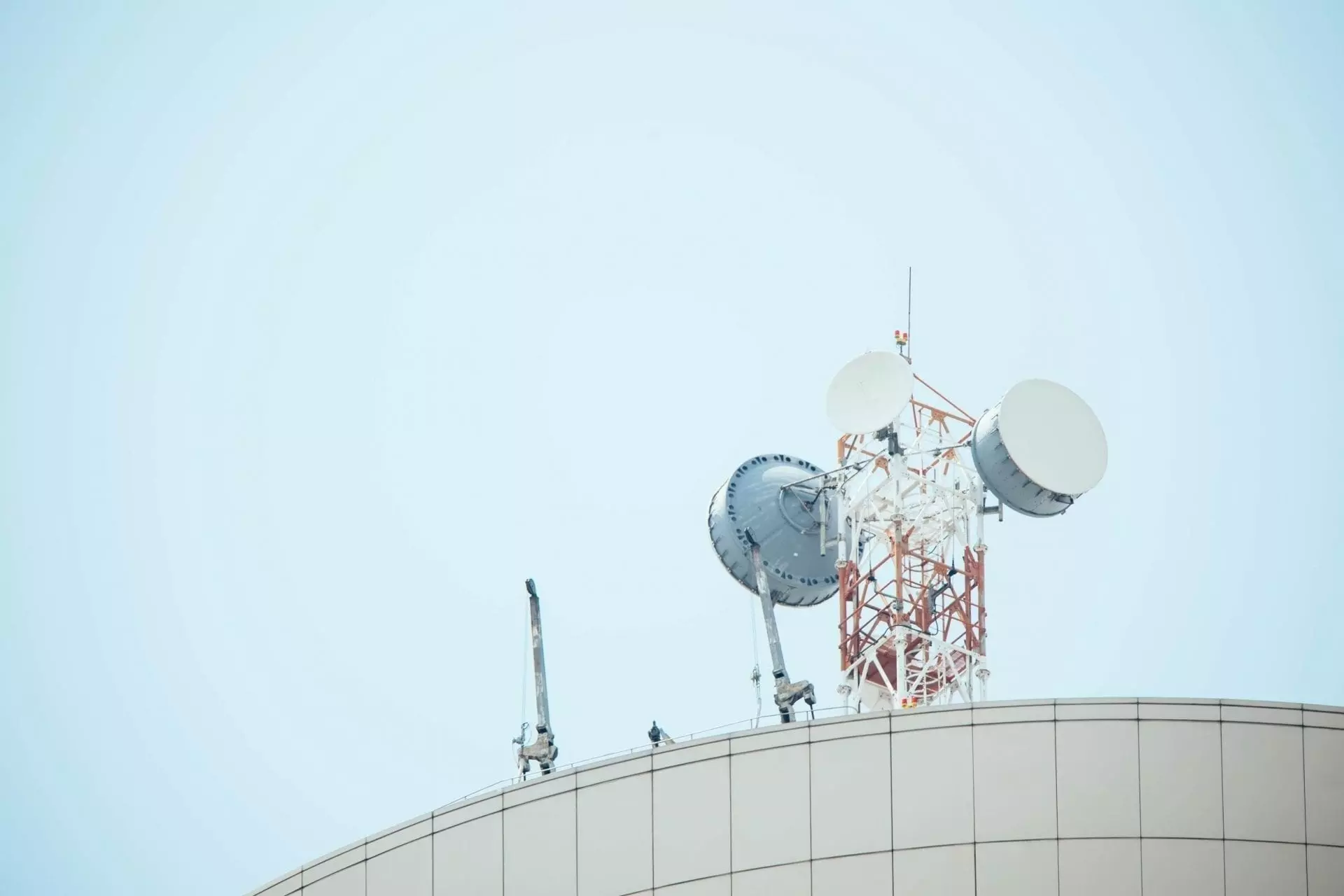
In a nutshell…
The CBRS gateway delivers managed data, voice, video, and IoT communication to a fixed wireless access network such as WiFi or Ethernet-LAN. The gateway is the router that works as an access point to provide entry into the fixed wireless Band 48 Infrastructure (Private LTE) and potentially used in 5G, via the 3.5 GHz frequency.
In the following article, we’ll dive deeper into the CBRS Getaway.
To understand what is the CBRS gateway about and how does it work, let’s start by defining the CBRS, its architecture, and its components.
What is CBRS?
Wireless mobile operators, fixed wireless access networks, or even the new IoT wireless deployments are continuously looking for new ways to obtain an additional spectrum. That is what CBRS does… it opens up new frequency bands up in the 3.5 GHz.
CBRS stands for Citizen Broadband Radio Service and is the broadcast frequency band of 3.5GHz, reserved for certain wireless services within the United States. The total band spectrum is from 3550 to 3700 MHz, which is 150 MHz wide. CBRS was released by the FCC as an additional spectrum for new mobile broadband users. The entire 150MHz is shared among three tiers appointed by the FCC, the Incumbents, PAL, and GAA.
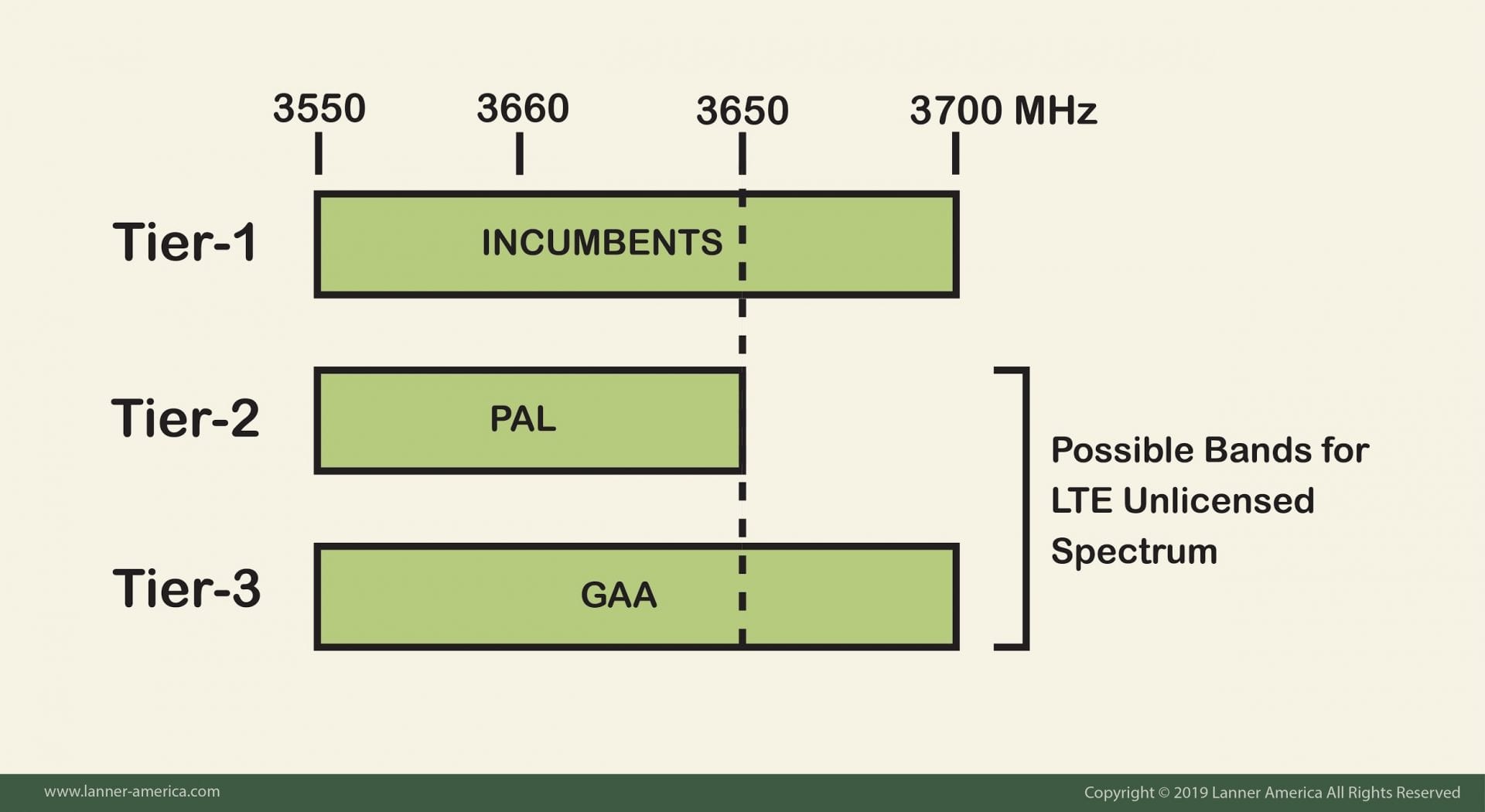
With the CBRS, wireless broadband operators will now be capable of deploying unlicensed LTE or 5G spectrum networks. This service will benefit the wireless operators because they can improve their LTE service and it can also help the general public, including SMBs or Enterprises because they will be able to create their own private LTE networks.
The 3-Tier Architecture
Although the entire 150 MHz spectrum has been used by the US radar, naval, and military, it is now commercially available and free under certain framework rules. The spectrum will still be continued to be used by the incumbent federal and non-federal users but will be shared with the general and commercial public. In order to safeguard those critical incumbent users, the CBRS follows the rules of the 3-tier architecture:
- The Incumbents: These are the “VIP users” that are currently operating int he 3.5GHz band, such as fixed satellite service, US Navy Radar, Navy, etc. These services will be given priority over the band and will be protected against interference from other tiers.
- Priority Access Licenses (PALs): These users will be given a chance to bid for a portion of the 3550-3650 MHz of the band. The license will be given for a single census for up to three years, and with non-renewable authorization. Mobile, cable, or other service providers will likely fall under this tier.
- General Authorized Access (GAAs): This is intended to open access to the spectrum for the general public. If there is no portion of the band given to higher tiers, the GAA can have access anywhere in the 3550-3700 MHz band.
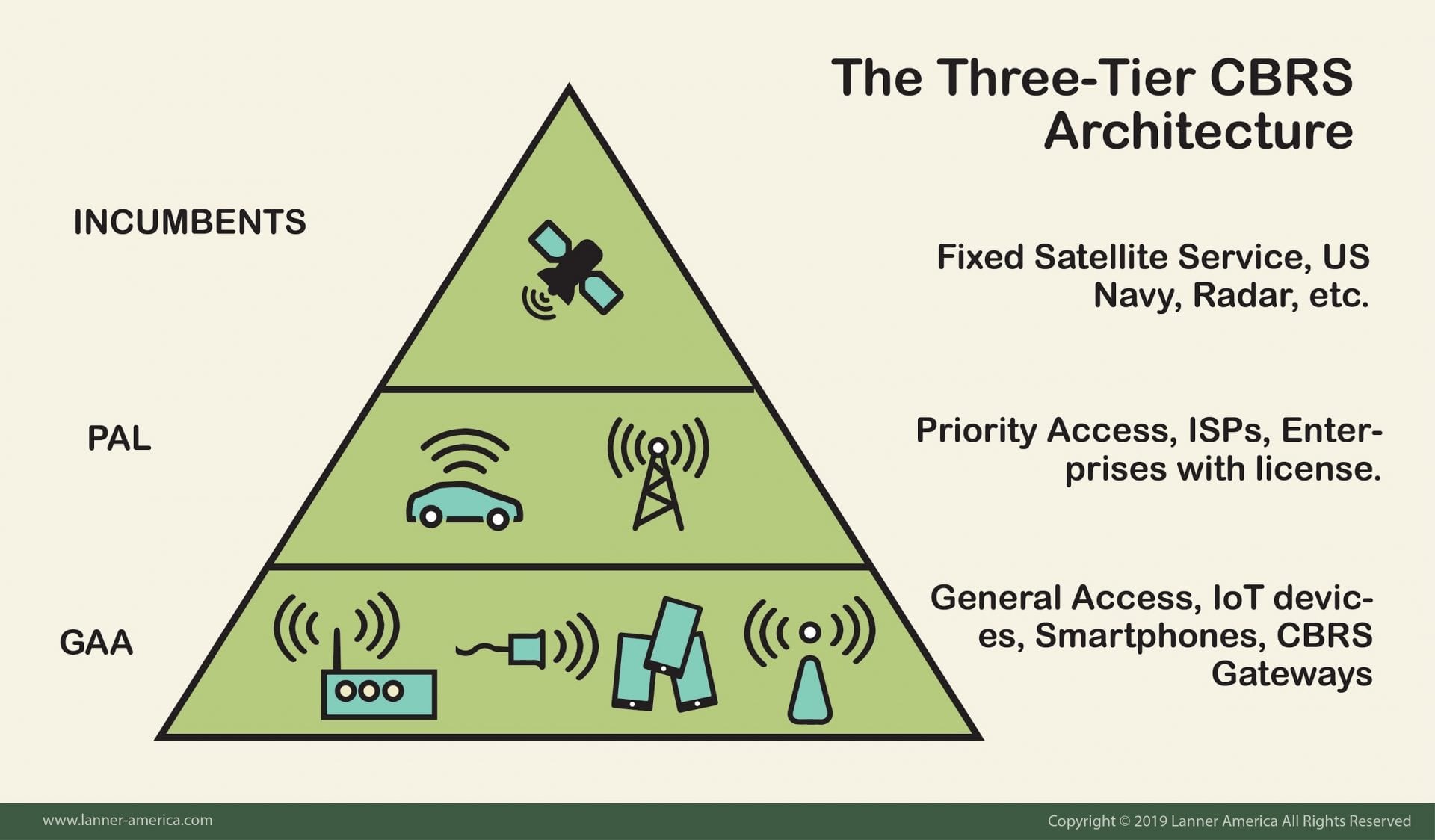
Although most components are not strictly bound to a specific tier in the architecture, we’ll likely start to see lots of new commercial devices available for the General Authorized Access (instead of macrocells, Radars, etc)… A good example of this is the CBRS Gateway which will introduce higher interoperability between CBRS and non-CBRS devices.
Key Components of the CBRS Architecture
The CBRS spectrum can be supported by LTE technology, including its protocols, devices, etc. Now anyone is capable of installing their own LTE (and 5G in the future) cellular network in their premises, just as they would install Wi-Fi.
Since CBRS can be deployed with LTE, it operates similar to the technology, in terms of the network model: Core, Access, and Distribution.
SAS
The Spectrum Access System (SAS), is one of the most important elements in the CBRS deployment. The SAS is in charge of managing and assigning the 3.5GHz spectrum dynamically across the three tiers of the CBRS architecture. It is a central coordination system that assigns unique radio channels to each user in order to avoid interference. A proxy between the SAS and the manager can access infrastructure can help to manage multiple connections between multiple networks. Finally, the FCC and ESC are the institutions that safeguard commercial and incumbent uses.
CBSD Access Points (AP)
The CBSD stands for Citizens Broadband Radio Service Device and can be an access point that connects the mobile network with the handsets or UEs. A CBSD Access Point can be an eNodeB compatible with CBRS when deploying the private LTE.
CBRS Endpoints
The CBRS endpoints are the edge infrastructure that will connect the end-user to the CBSD access points.
- The CBRS Gateway: The gateway delivers managed data, voice, video and other services to a fixed wireless access network. The CBRS Gateway is the key to CBRS interoperability because it will connect different mobile broadband technologies such as LTE, LTE-A Pro (CBRS) and potentially 5G in the near future. The gateway will link these broadband technologies to traditional indoors such as Ethernet-LAN or Wi-Fi.
- The CBRS UE: The CBRS User Equipment (UE) are end-user devices that support the 3.5GHz band. Just as most devices support Wi-Fi wireless technology, most equipment will support CBRS in the future, these include smartphones, laptops, IoT devices, cameras, sensors, etc.
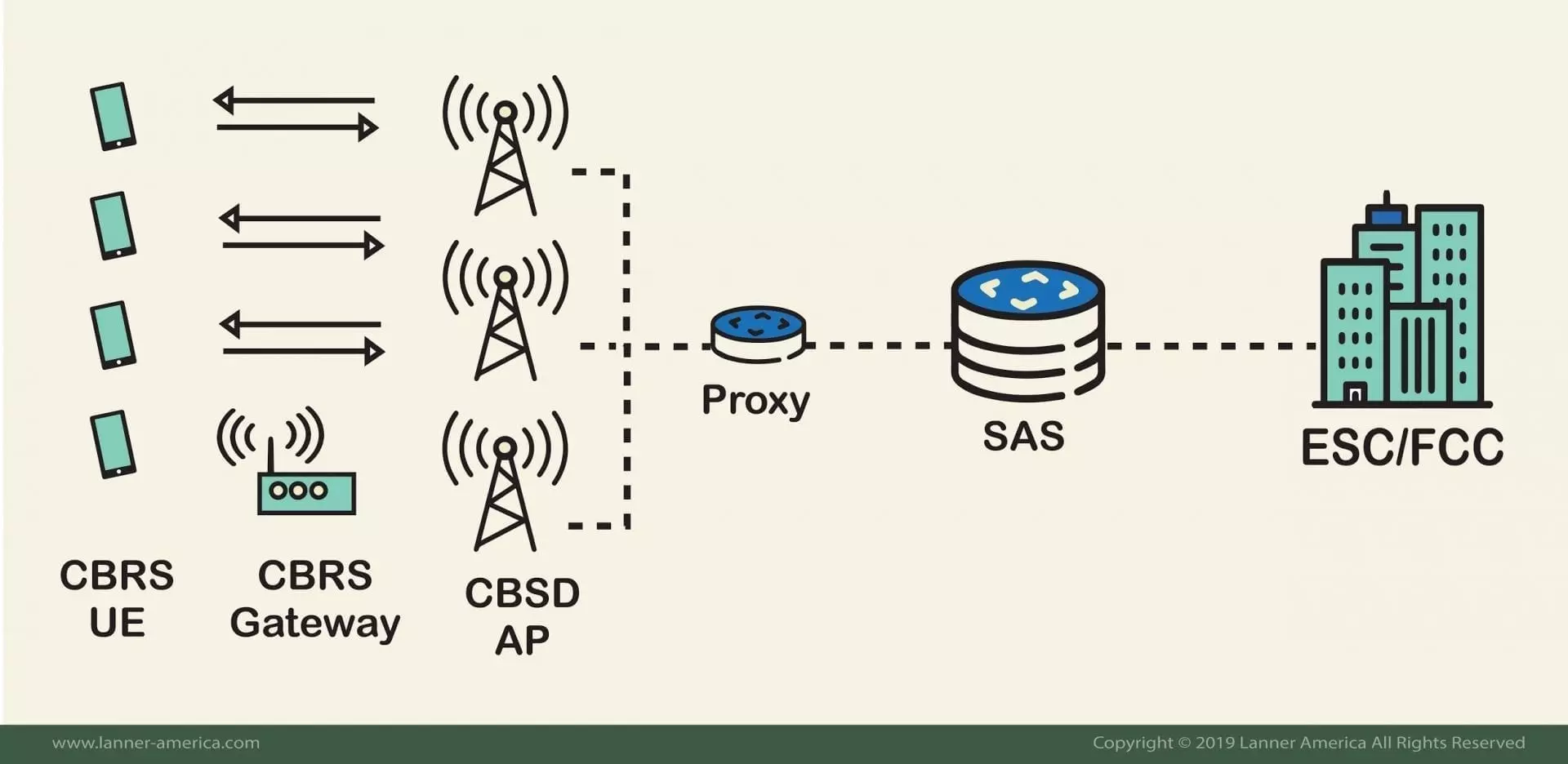
The CBRS Gateway
The CBRS Gateway provides new opportunities for SMBs and enterprises looking to create their own private LTE network by leveraging the shared CBRS spectrum. The gateway should be capable of connecting seamlessly to existing networks such as Ethernet-LAN or WiFi and opening access to the 3.5GHz band.
The gateway also gives opportunities for Internet or cable service providers to eliminate the wiring networks and reduce costs. A mobile broadband operator can use the LTE infrastructure, including EPC and eUTRAN to provide access to the Internet and repurpose it for CBRS. For example, instead of installing new cabling to a new rural area, an eNodeB to provide a signal to a home-based CBRS gateway might be enough.
One of the biggest challenges with CBRS is interoperability. The new devices will need to be operational with the access points. A solution to the lack of standardization could be the CBRS gateway.
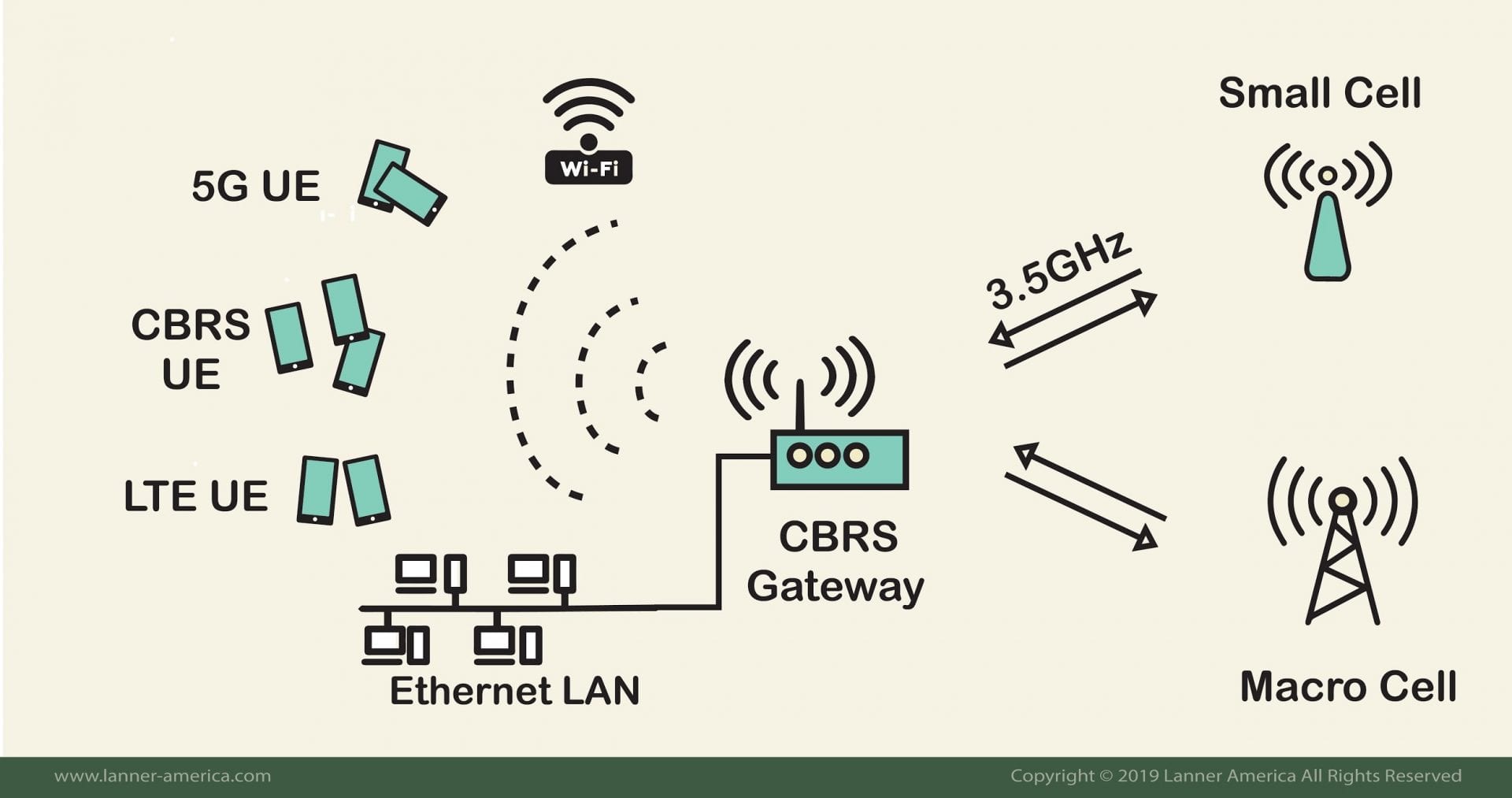
The CBRS gateway can serve as a medium of “Compatibility” between CBRS devices and non-CBRS devices.
CBRS Gateway Use Case Scenarios
Mobile Operators: One of the most widely use cases for the CBRS Gateway are from mobile operators that would like to improve their LTE Service. They would just install a CBSD access point or use their existing LTE infrastructure to provide Internet. LTE signal and bandwidth could be improved (or even a new 5G rollout), as long as the end-user has a UE or Gateway that support CBRS.
Cable Operators: Cable operators usually offer their services through wired infrastructure. Usually, a home connects to the Internet to get cable via a wired gateway. With a CBRS gateway, we might start to see cable operators installing small cell devices in whole neighborhoods or even towns to provide 3.5 GHz signal to the gateway.
Private LTE networks: The last but not less popular are the private LTE networks. Enterprises or SMBs will likely utilize small LTE cells or infrastructure that support CBRS to run their private LTE networks. They will likely operate under the GAA and in some cases PAL tiers to get the benefits of LTE’s mobility and speed.
The CBRS Gateway Characteristics
The CBRS Gateway will need to be compatible with existing technology, easy to configure and manage, fast, secure, and robust. Below are a few characteristics that might be found in a CBRS Gateway.
- Antenna Technology. The CBRS Gateway must be capable of receiving the 3.5 GHz CBRS signal. A 4X4 MIMO antenna arrangement with Carrier Aggregation (CA) could be the optimal solution to receive the signal from a small cell located outside.
- The CBRS broadband should be capable of transforming to signal to traditional home networks like Wi-Fi or Ethernet LAN.
- Easy Configuration. The device can be easily configured as LAN or WLAN. It must support Gigabit Ethernet interfaces to provide a fast internal network.
- Simple Management. A gateway providing Internet to a LAN can be managed through the Cloud. That way, the network can be accessed and managed remotely.
- A key component that the CBRS gateway introduces is security. As the gateway can help to reduce the Single Point of Failure and introduce stronger authentication methods.
- Robust and Compact body. Since the gateway is receiving a mobile broadband signal, it could be mounted in peculiar places such as emergency response vehicles, stadiums, parking lots, etc. Since these devices could be often located externally, their enclosure must be hardened and wide-temperature resistant.
An example of a CBRS gateway is Lanner’s PGN600 LTE module which is an LTE Ready Radio Modem for Mission-Critical Communications. The PGN600 module adds full support for private LTE CBRS band 48 and public safety-oriented frequencies (FirstNet) and is compatible with Lanner’s communication and security gateways for vehicles, industrial communication and IIoT.
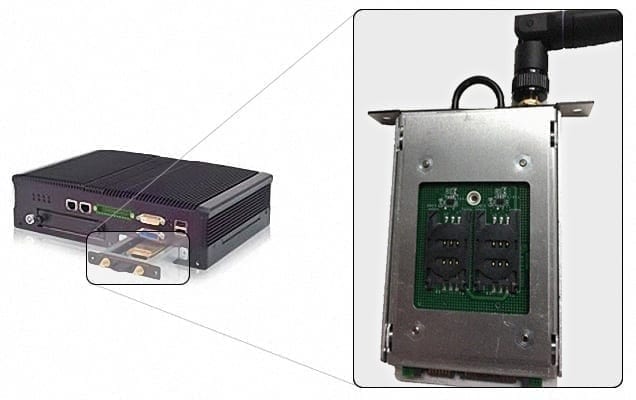
Summary
The CBRS Gateway can create favorable circumstances for Enterprises, Mobile broadband operators, and even Small to Medium Size Business looking to expand the wireless horizon. CBRS’s unlicensed high-frequency band is creating similar opportunities as WiFi did before, but this time with far faster speeds and longer coverage ranges. The CBRS 3.5 GHz band provides higher bandwidth than current wireless technologies, which might even a pathway for new 5G roll-outs.
The CBRS gateways are intended to deliver CBRS technology that will help operators expand their LTE coverage or create new 5G deployments. It will also help the general public create their own Private LTE networks. The CBRS Gateway takes the wireless signal and transforms it to more friendly or traditional access technology.







